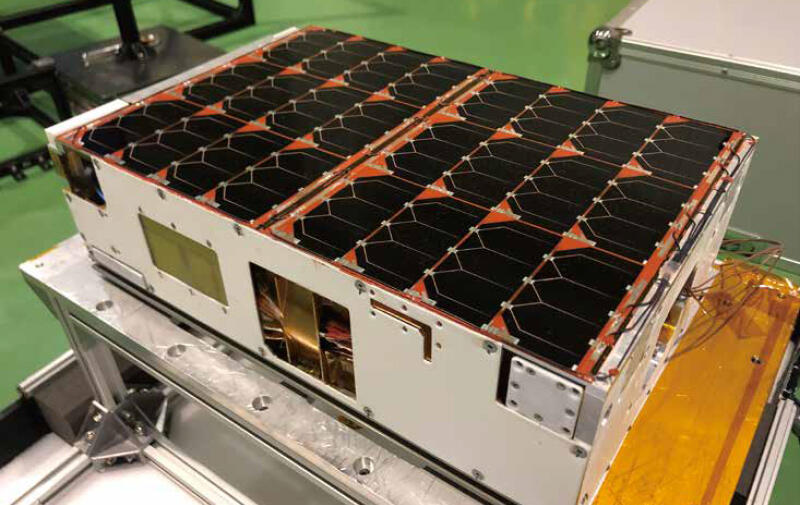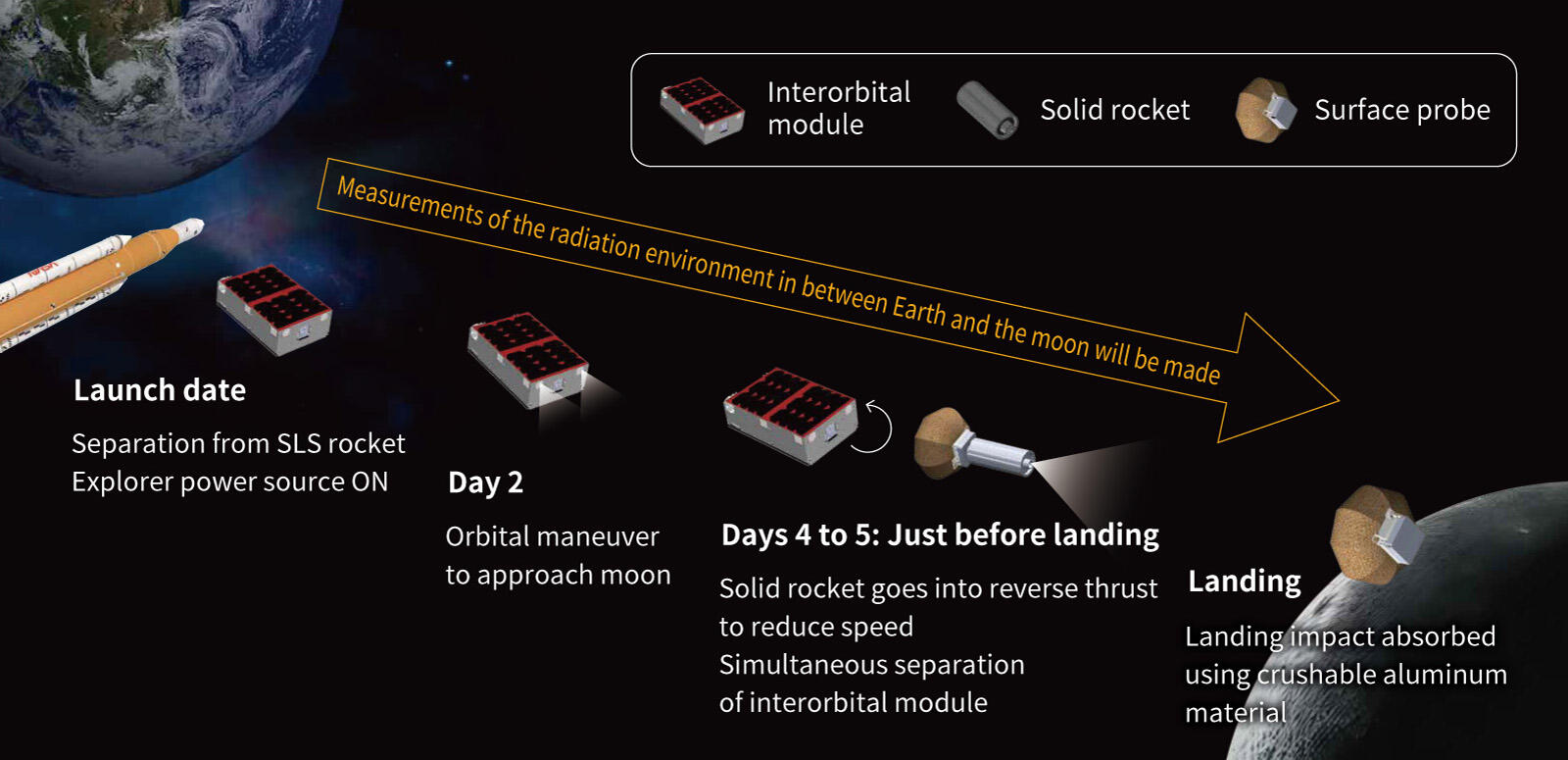Institute of Space and Astronautical Science (ISAS)
To the moon with the most powerful space launch system (SLS)
The challenge of OMOTENASHI,
the world's smallest moon lander
In mid-July 2021, the handover to NASA of the Nano Moon Lander OMOTENASHI (Outstanding MOon exploration TEchnologies demonstrated by NAno Semi-Hard Impactor) was completed. The total mass of this CubeSat is just 12.6kg, and the ultra-small probe a mere 700g. It will be jointly loaded on a rocket to be launched by NASA's next-generation large rockets Space Launch System (SLS). Its mission is to test whether or not a probe of such a small size can successfully land on the surface of the moon. The team leader HASHIMOTO Tatsuaki has worked on medium-size moon lander projects for around 20 years, but this is the first attempt to develop a nano moon lander of such as small size.

OMOTENASHI interorbital module
In 2015 when NASA first approached the space agencies of various nations with the proposal to jointly load CubeSats on the SLS, Hashimoto applied to do so with a sense of mission that this was an opportunity not to be missed. The following year it was decided that OMOTENASHI would be jointly loaded on the SLS with EQUULEUS (EQUilibriUm Lunar-Earth point 6U Spacecraft). As Hashimoto recalls: "SLS is a rocket that was designed with the purpose of launching the Orion spaceship. Subsequently it was important that it met the safety criteria for carrying humans, and development went ahead with the support of experts in the International Space Station and so on. There were also strict restrictions regarding size, and we optimize the design of everything from the shape of the apparatus to the way it would be attached using 3D CAD software. However, since we were unable to control the shape of the cables, we were faced with a problem unique to nano-sizing - when we assembled everything it wasn't possible to stow all the cables."
OMOTENASHI is designed so that just before it reaches the moon the rocket engine goes into reverse thrust to reduce speed and land it with the minimum speed relative to the moon. As Hashimoto explains: "As the solid rocket cannot adjust its propulsion power, however we tried we were still left with the issue of it reaching the moon at a relative speed of 200km/h. We had to be very imaginative in trying to absorb the impact shock so that the internal machinery wouldn't be damaged at this speed and, for example, on the surface probe we used a crushable aluminum material created with a 3D printer."
Hashimoto says that this mission is significant for the very reason of its challenging nature.
"By obtaining experimental data this time, we will be probably be able to understand what sort of technological improvements will be necessary for future missions. Furthermore, if we can demonstrate that it is possible to land small explorers on the moon that ought to lower the threshold for space exploration. The technology of OMOTENASHI is the bringing together of all sorts of miniaturization technologies. We believe that it will be utilized in all sorts of exploration, to Mars, asteroids, comets and more."

Profile

|
|
|---|
All the images are copyrighted ©JAXA unless otherwise noticed.
- Home>
- Global Activity>
- Public Relations>
- JAXA’s>
- JAXA's No.85>
- The challenge of OMOTENASHI, the world's smallest moon lander